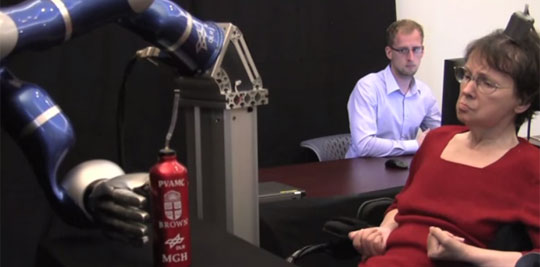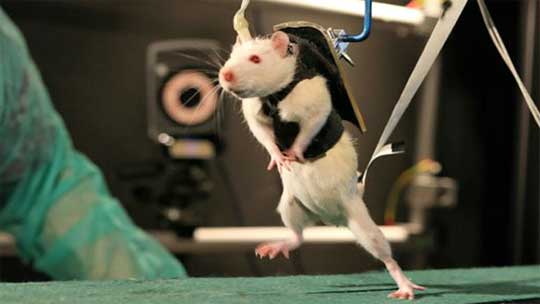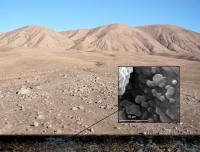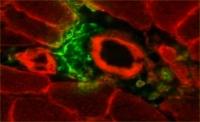lunes, 12 de noviembre de 2012
martes, 6 de noviembre de 2012
Tres alumnos de Retamar ganadores del XXV Certamen Nacional de Jóvenes Investigadores
Se ha celebrado la XXV Edición del
Certamen Jóvenes Investigadores, el congreso más importante a nivel nacional de
trabajos de investigación para alumnos de Secundaria. En él han recibido el
Premio Especial del jurado tres alumnos del Colegio Retamar por su trabajo
titulado La energía del futuro: la pila microbiana.
Álvaro Mingote, Gonzalo Maortua y Jaime
Fernández de Santaella han sido los artífices. Han diseñado una pila de
combustible microbiana que logra energía a partir de unas bacterias que se
localizan en el barro. La diferencia con otras fuentes renovables radica en que
este sistema permite obtener energía «de forma limpia, sin dañar el medio
ambiente», cuentan ellos.
Los alumnos y el profesor, Javier
Fernández-Portal, han recibido una beca para investigar en un centro del CSIC,
durante semanas. Además representarán a España en el Certamen Europeo de
Jóvenes Investigadores, que se celebrará en Praga en septiembre de 2013.
Además, Javier Fernández-Portal ha sido
premiado por su trayectoria como profesor coordinador cuya labor ha sido
apreciada como especialmente destacable en áreas del fomento de la cultura
científica, tecnológica e investigadora en el ámbito de la juventud española.
Noticia en la prensa. (diariosur.es)
http://www.diariodepozuelo.es/20121022325907/tres-alumnos-del-colegio-retamar-premiados-en-la-xxv-edicion-del-certamen-de-jovenes-investigadores
(diariodepozuelo.es)
martes, 9 de octubre de 2012
lunes, 10 de septiembre de 2012
Seis Premios Nobel en el Congreso Internacional de Bioquímica.
"Seis premios nobel de Química o Medicina participarán en el Congreso Internacional de Bioquímica y Biología Molecular que esta semana se celebrará en Sevilla, primera capital española que acoge este evento de la Unión Internacional de Bioquímica y Biología Molecular (IUBMB, en sus siglas en inglés).
A este congreso se han inscrito unos 2.500 científicos
procedentes de diversos centros de investigación, laboratorios y
universidades internacionales, según ha informado hoy en un comunicado
la organización.
Los
seis nobeles cuya presencia está anunciada en este congreso, cuyo lema
es "De las moléculas simples a la Biología de Sistemas", son Tim Hunt,
Ferid Murad, Ada Yonath, Hamilton Smith, Robert Huber y Venki
Ramakrishnan (en la imagen)."
Uno de los workshops del Congreso fue el de Ciencia en la Escuela.
Participaron
Pedro Jordano, y Juli Peretó, investigadores de prestigio en España, y
que dieron unas conferencias muy enriquecedoras. También participamos
Gerard Cobut (secretario de la Olimpiada Internacional de Biología) y yo (Javier Fernández-Portal).
He tenido la suerte de representar a la Olimpiada Española de Biología. En mi intervención hice referencia a la importancia de enseñar la ciencia de forma práctica, la conveniencia de enseñar el método por el que la ciencia llega a la verdad y por tanto hasta dónde puede llegar.
También
conté algunas de la iniciativas que estamos desarrollando en la
International Biology Olympiad, propuestas por España, referentes a
estudios de contenidos entre diferentes países y a modos de enseñar.
También
comenté algunos aspectos de la enseñanza del Bachillerato Internacional
que considero muy adecuados y que podrían incorporarse a la enseñanza
normal en España.
Ha sido una gran experiencia.
Recientemente la página web de la Federación Europea de Sociedades de Bioquímica, FEBS Education Platform ha publicado las presentaciones de diapositivas empleadas por los "speakers".
Recientemente la página web de la Federación Europea de Sociedades de Bioquímica, FEBS Education Platform ha publicado las presentaciones de diapositivas empleadas por los "speakers".
martes, 7 de agosto de 2012
martes, 31 de julio de 2012
jueves, 28 de junio de 2012
Hallan un «error fatal» en un experimento histórico sobre la selección sexual
martes, 19 de junio de 2012
New domain?
A new domain of life
Plenty more bugs in the sea
Tantalising evidence is emerging of a serious gap in biologists' understanding of the diversity of life on Earth
LIFE, like Caesar's Gaul, is divided into three parts. The Linnaean system of classification, with its prescriptive hierarchy of species, genus, family, order, class, phylum and kingdom, ultimately lumps everything alive into one of three giant groups known as domains.
http://www.economist.com/node/18437900
Plenty more bugs in the sea
Tantalising evidence is emerging of a serious gap in biologists' understanding of the diversity of life on Earth
LIFE, like Caesar's Gaul, is divided into three parts. The Linnaean system of classification, with its prescriptive hierarchy of species, genus, family, order, class, phylum and kingdom, ultimately lumps everything alive into one of three giant groups known as domains.
http://www.economist.com/node/18437900
lunes, 18 de junio de 2012
Migraciones
INTO THE MIDDLE EAST
150,000 to 125,000 years ago.
The global migration began when modern humans left Africa and crossed the Sinai or the base of the Red Sea. Fossils in Israel record their presence, and a 2011 discovery in Arabia suggests that by 125,000 years ago (125 kyr ago), modern humans had reached the doorstep of Asia. Click on the red circles for key sites.miércoles, 13 de junio de 2012
Microbiome
"nytimes: Human Microbiome Project Decodes Our 100 Trillion Good Bacteria http://t.co/Tr6RAS3v"
domingo, 10 de junio de 2012
"Jack Andraka, Gordon E. Moore Award Winner"
Jack Andraka was awarded USD 75,000 for his development of a new method to detect pancreatic cancer.
| |
Mi segundo tweet
@javierfportal: In a random world there cannot be constants, says gravity. Is not "chance" another way to call ignorance?
sábado, 9 de junio de 2012
Paralyzed Woman Controls a Robotic Arm With Her Mind
Paralyzed Woman Controls a Robotic Arm With Her Mind
HIGH T3CH | 17 DE MAYO DE 2012

Cathy Hutchinson has been unable to move her own arms or legs for 15 years. But using the most advanced brain-machine interface ... Read more
HIGH T3CH | 17 DE MAYO DE 2012

Cathy Hutchinson has been unable to move her own arms or legs for 15 years. But using the most advanced brain-machine interface ... Read more
sábado, 2 de junio de 2012
Walking Again After Spinal Cord Injury – Testing on Rats
Walking Again After Spinal Cord Injury – Testing on Rats
HIGH T3CH | 1 DE JUNIO DE 2012

Rats with spinal cord injuries and severe paralysis are now walking (and running) thanks to researchers at EPFL. Published in ... Read more
HIGH T3CH | 1 DE JUNIO DE 2012

Rats with spinal cord injuries and severe paralysis are now walking (and running) thanks to researchers at EPFL. Published in ... Read more
Fungal fidelity: some ants have been eating the same meal for 5 million years!
Fungal fidelity: some ants have been eating the same meal for 5 million years!
30 DE MAYO DE 2012

When the time comes to fly away from home and start a nest of her own, the daughter queen of a fungus-farming ant colony departs with a small bit of f... Read more
30 DE MAYO DE 2012

When the time comes to fly away from home and start a nest of her own, the daughter queen of a fungus-farming ant colony departs with a small bit of f... Read more
martes, 15 de mayo de 2012
jueves, 10 de mayo de 2012
domingo, 26 de febrero de 2012
sábado, 25 de febrero de 2012
Boom and bust cycle of marine biodiversity every 60 million years linked to uplifting of continents
Boom and bust cycle of marine biodiversity every 60 million years linked to uplifting of continents
SMITHSONIAN SCIENCE | 23 DE FEBRERO DE 2012
http://pulse.me/s/6h0W5

A mysterious cycle of booms and busts in marine biodiversity over the past 500 million years could be tied to a periodic uplifting of the world's cont... Read more
Study: Evolution of earliest horses driven by climate change
Study: Evolution of earliest horses driven by climate change
SCIENCE NEWS | 23 FEBRERO 2012

When Sifrhippus, the earliest known horse, first appeared in the forests of North America more than 50 million years ago, it ... Read more
SCIENCE NEWS | 23 FEBRERO 2012
When Sifrhippus, the earliest known horse, first appeared in the forests of North America more than 50 million years ago, it ... Read more
viernes, 24 de febrero de 2012
miércoles, 22 de febrero de 2012
Wild flower blooms again after 30,000 years on ice : Nature News & Comment
sábado, 18 de febrero de 2012
viernes, 17 de febrero de 2012
Microbial oasis discovered beneath the Atacama Desert
Microbial oasis discovered beneath the Atacama Desert
BIOLOGY NEWS NET | 16 DE FEBRERO DE 2012

Microbes grow in salt crystals below the Atacama Desert. Two metres below the surface of the Atacama Desert there is an 'oasis' ... Read more
BIOLOGY NEWS NET | 16 DE FEBRERO DE 2012

Microbes grow in salt crystals below the Atacama Desert. Two metres below the surface of the Atacama Desert there is an 'oasis' ... Read more
Prions play key role in yeast survival and evolution
Prions play key role in yeast survival and evolution
MIT NEWS - TOPIC - BIOLOGY | 16 DE FEBRERO DE 2012
Misfolded proteins called prions are best known for causing neurodegenerative disorders such as Creutzfeldt-Jakob disease and ... Read more
MIT NEWS - TOPIC - BIOLOGY | 16 DE FEBRERO DE 2012
Misfolded proteins called prions are best known for causing neurodegenerative disorders such as Creutzfeldt-Jakob disease and ... Read more
A Molecule That Can Help Antibiotics Kill Superbugs | 80beats
A Molecule That Can Help Antibiotics Kill Superbugs | 80beats
DISCOVER MAGAZINE | 17 DE FEBRERO DE 2012

_K. pneumoniae_ Bacteria that have evolved defenses against antibiotics are something of a disaster waiting to happen. Whenever a new drug-resistant... Read more
DISCOVER MAGAZINE | 17 DE FEBRERO DE 2012

_K. pneumoniae_ Bacteria that have evolved defenses against antibiotics are something of a disaster waiting to happen. Whenever a new drug-resistant... Read more
miércoles, 15 de febrero de 2012
World’s Tiniest Chameleons Found in Madagascar
World's Tiniest Chameleons Found in Madagascar
SCIENCE | 15 DE FEBRERO DE 2012

Researchers have recently discovered four new chameleon species, which rank among the world's tiniest reptiles. Adults of the smallest species are jus... Read more
domingo, 12 de febrero de 2012
Amazing skin gives sharks a push
Amazing skin gives sharks a push
BIOLOGY NEWS NET | 9 DE FEBRERO DE 2012
Streamlined sharks are legendary for their effortless swimming. George Lauder from Harvard University, USA, explains that the ... Read more
BIOLOGY NEWS NET | 9 DE FEBRERO DE 2012
Streamlined sharks are legendary for their effortless swimming. George Lauder from Harvard University, USA, explains that the ... Read more
sábado, 11 de febrero de 2012
An advantage of zebra stripes
Polarotactic tabanids find striped patterns with brightnezz and/or polarization modulation least attractive: an advantage of zebra stripes. Leer más...
martes, 7 de febrero de 2012
Another First For 3D Printing – Woman Receives Jaw Implant
Another First For 3D Printing – Woman Receives Jaw Implant
SCIENCE | 7 DE FEBRERO DE 2012

With 3D printing, doctors can now create better bone implants at less cost than with conventional implants. An 83-year-old woman suffering from a low... Read more
SCIENCE | 7 DE FEBRERO DE 2012

With 3D printing, doctors can now create better bone implants at less cost than with conventional implants. An 83-year-old woman suffering from a low... Read more
lunes, 6 de febrero de 2012
Exercise triggers stem cells in muscle
Exercise triggers stem cells in muscle
BIOLOGY NEWS NET | 6 DE FEBRERO DE 2012

Mesenchymal stem cells (green) accumulate in skeletal muscle following exercise and release growth factors to spur ... Read more
BIOLOGY NEWS NET | 6 DE FEBRERO DE 2012

Mesenchymal stem cells (green) accumulate in skeletal muscle following exercise and release growth factors to spur ... Read more
sábado, 4 de febrero de 2012
New procedure repairs severed nerves in minutes, restoring limb use in days or weeks
New procedure repairs severed nerves in minutes, restoring limb use in days or weeks
BIOLOGY NEWS NET | 4 DE FEBRERO DE 2012
American scientists believe a new procedure to repair severed nerves could result in patients recovering in days or weeks, ... Read more
BIOLOGY NEWS NET | 4 DE FEBRERO DE 2012
American scientists believe a new procedure to repair severed nerves could result in patients recovering in days or weeks, ... Read more
jueves, 2 de febrero de 2012
martes, 31 de enero de 2012
lunes, 30 de enero de 2012
viernes, 27 de enero de 2012
Mice sing ultrasonic love songs to their sweethearts [Animal Behavior]
Mice sing ultrasonic love songs to their sweethearts [Animal Behavior]
PULSE SCIENCE | 27 DE ENERO DE 2012
http://pulse.me/s/5nKkq

If you've ever seen a common domestic mouse, your first thought probably wasn't, "You know, I bet that guy has an _amazing_ singing voice." But it tur... Read more
This bizarre tulip-shaped creature is related to nothing else on Earth [Biology]
This bizarre tulip-shaped creature is related to nothing else on Earth [Biology]
PULSE SCIENCE | 25 DE ENERO DE 2012
http://pulse.me/s/5jmih

This is _Siphusauctum gregarium_, a creature that lived in the ocean 500 million years ago. It's so completely strange that it's taken scientists 30 y... Read more
jueves, 26 de enero de 2012
Prion diseases hide out in the spleen, 1/26/12 8:10 PM
 Nature News&Comment (@NatureNews) Nature News&Comment (@NatureNews)1/26/12 8:10 PM Prion diseases hide out in the spleen bit.ly/y5OoQR |
domingo, 22 de enero de 2012
jueves, 19 de enero de 2012
martes, 10 de enero de 2012
Gut microbe networks differ from norm in obese people, systems biology approach reveals
Suscribirse a:
Entradas (Atom)






